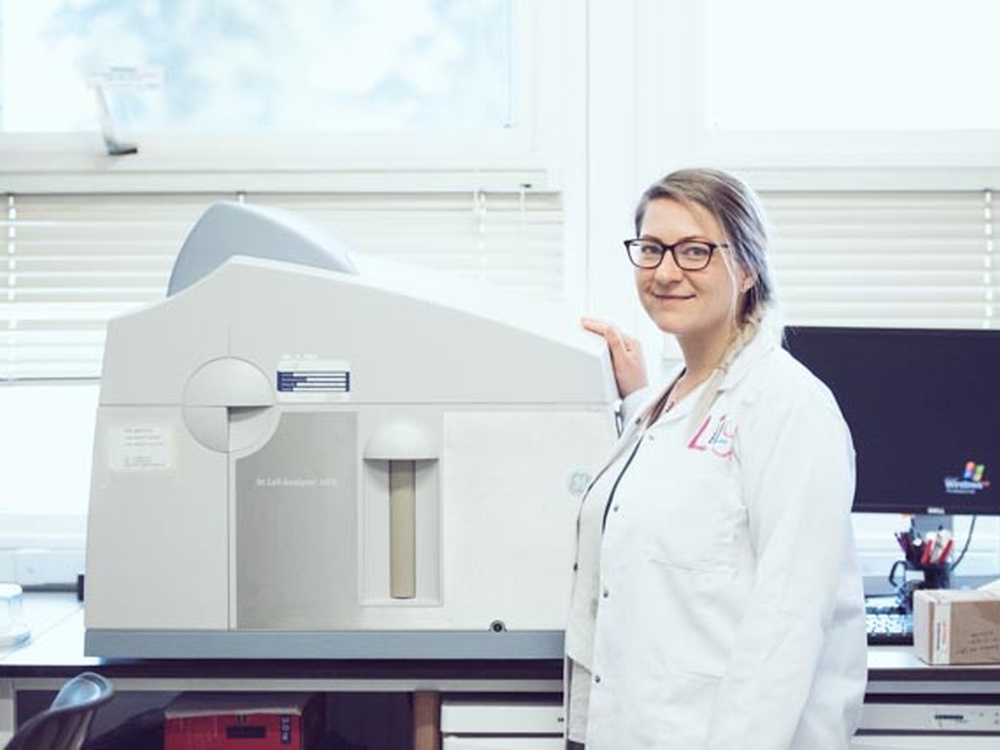When you study biology at university they don't teach you about mitochondrial disease. I first learned about it when I did my research placement under Professor Joanna Poulton (Honorary Consultant in Mitochondrial Genetics at John Radcliffe Hospital). She submitted a research proposal that The Lily Foundation agreed to fund, so when I finished my degree I was able to continue the work I'd started. I didn't have a medical background, I'm a lab scientist, but I felt it was a really interesting field.
Research into mitochondria is gaining momentum, not just in the field of mitochondrial disease but with neurodegenerative diseases generally. We now know that mitochondria are not just the powerhouse of the cell, they do a lot of other things too. Research into diseases like Parkinson's, Huntington's and even cancer are moving in that direction. So if you can figure out the process of mitophagy (the natural turnover of mitochondria in cells), you could get huge benefits in terms of treatments. That's why this is such an important area of research.
One of my most important tools in the lab is my cell-screening machine, which I've nicknamed Charlie. Using Charlie we have developed a screening process to find out whether mitophagy is in fact dysregulated (higher or lower than normal levels) in patients with mitochondrial disease. A study of skin biopsies from about 30 patients suggests that it is, and in some cases we've found that the increase in turnover of mitochondria tends to correlate with the phenotype; the sicker the patient, the higher the turnover. These are small numbers we are working with and it's too early to say how significant the findings are, but we are making progress.
The second part of our project involves research into drugs that have been shown to affect the process of mitophagy. We have identified 23 drugs from around 400 that were tested, and what we're trying to find is the specific modulator that could be used as a treatment. So we are looking for ways to repurpose existing drugs to treat mitophagy. Any treatment would still be a long way off, but we are laying down important ground research that needs to happen before we can move towards that. You have to do things step by step.
I spend a big part of my day in the lab, but there's also a lot of number crunching on the computer. I'm going through data, or reading up on the latest mitochondrial disease research. I've been lucky enough to attend a lot of research conferences too, and my impression is that there has been a tremendous leap forward in the mitochondrial field. If you look at areas like genetic diagnosis, for example, things have come a very long way compared to previous years. Many more patients can now get a confirmed diagnosis for mitochondrial disease relatively easily and fast.
General awareness about mitochondrial disease is also increasing, which is a very important thing. As a biology student, four years ago I had never heard of mitochondrial disease, and I think that might have been the case for a lot of GPs too. If you don't know about a condition you can't recognise possible symptoms or refer patients for screening, but I think that is starting to change now as more people outside the immediate field of mitochondrial disease research become aware of the issues.
I'm really excited about my work, I enjoy trying to work out what's going on in these cells. The goal of research is to find things out, and that's what drives every scientist. I want to move on to other models and finally get to the point where we can tell patients, 'yes, we have a treatment that might help you'. It's a very long process, but the small successes along the way help to keep you going. You start off with a hypothesis and you do experiments to prove it right or wrong. And when you get it right it's a very nice feeling, knowing you've made another step on the path to a cure.

